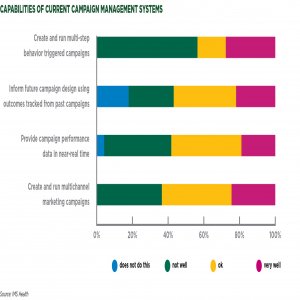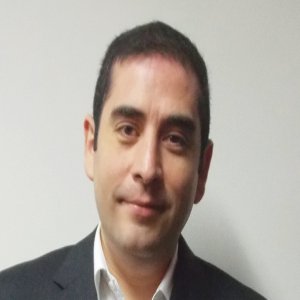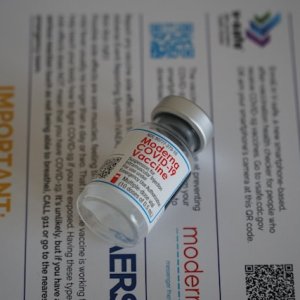Genomic Mapping at the Forefront of Innovation

STORY INLINE POST
Q: What is the main aim of INMEGEN?
A: The institute was established in response to the major revolution in biological sciences and in experimental biology in general. The focus on health, specifically in the genomics field, was triggered by the human genome project. When the institute was conceived I had the opportunity to participate in some of the early discussions concerning how the project should be developed due to my expertise in DNA chemistry, protein structure, and function. We were aware that the human genome project would bring about a lot of opportunities for research within the healthcare industry, which was one of the initial reasons the funding was provided for such a large project.
Q: How successful has INMEGEN’s journey been so far?
A: Our foundation at INMEGEN is our solid and large staff of exceptional researchers, which is a real asset as many institutions struggle to attract such high caliber scientists. There are also several examples of high quality outputs, but one area that has been particularly acclaimed was our collaboration with the Broad Institute of MIT and Harvard, through which we produced some important papers related to the unique characteristics of the Mexican genetic background. This was the largest study conducted on a population with Latin heritage and a previously undiscovered gene variant was discovered, accounting for roughly 25% of the diabetes epidemic in the country as it was found that Latin Americans, especially Mexicans, are particularly prone to developing diabetes. This indicates that the genome is an area we particularly need to investigate.
Q: How far away are you from producing medicine to treat Mexico’s individual genome expressions, and what role will both the public and private sectors play in this?
A: This will happen soon and there are several areas where we are more advanced in this sense, certainly when it comes to cancer. One example is the discovery that the inherited propensity for cancer is related to several genes that we have discovered, such as the BRCA1 and BRCA2 genes that indicate a high risk for breast cancer. Of course, there are certain diseases that are particular to certain populations, but cancer is more of a global disease, and is more similar in different parts of the world. Very soon, we should have a shared analytical platform for the entire public health sector, which will help with the molecular characterization of tumors. That means that the private sector may also participate by using technology developed in Mexico or imported from abroad.
Q: To what extent are you collaborating with the private sector in this regard?
A: We have around ten different collaborations with different companies in several areas. We have some of the most developed facilities for technology transfer and the most developed internal regulations approved by our governmental body which allows us to engage in contracts with the private sector. Some of these regulations lack enforcement in the other institutes, so we are more advanced because we know that this field is contemporary, and will continue to produce more business opportunities.
Q: What is the role of INMEGEN’S Technology Transfer Office?
A: Our technology transfer office is registered with CONACYT, which means that we benefit from some of the incentives that CONACYT provides for innovation. We already developed three projects within the industry, but there is also the potential for five more. Typically a company will approach CONACYT to propose collaborating with us on a project and our researchers will work with the companies directly to provide them with some of our expertise and technological capabilities. In such cases, there are clear rules of usage and protection for the intellectual property.
Q: How do you anticipate INMEGEN’S recent agreement with IMPI will lead to increased patent registrations by the institute?
A: We identified the field of genomics as having a lot of intellectual property so we signed a knowledge sharing agreement with IMPI. INMEGEN can help IMPI to understand and anticipate some of the issues that it will face in technical terms, and in turn they keep us aware of new regulations and rules. Many developments will be patented but only a fraction of those will become actual products, so we should not over-emphasize the intrinsic value of a patent. Of course, we realize that it is completely necessary, specifically when interacting with large companies, to produce patentable results.
Q: Why is INMEGEN so unique in Mexico when it comes to technology transfer?
A: Most of my peers in other institutes are not allocated the resources to carry out research in this field, so when a promising project arises they are forced to decline or work on it in their own time. There is not a single other health institute that has a technology transfer office, or has internal regulations regarding the distribution of benefits and royalties. It is not something that is part of the culture in the health science sector.
Q: The government has pledged to increase expenditure on R&D to 1% of the GDP – how do you hope this will impact the sector?
A: Over the course of my 30 year career, this promise has been made at least six times. This is the first time that I have seen an actual reflected increase in real terms. The highest investment we previously saw was when we got close to 0.45% of GDP. Now we have reached a level of 0.54%, which shows real improvement. Some of my more basically-trained scientists are now devoted to innovation and are working directly with companies, so we are very well positioned to benefit from that particular pledge.
Q: How do INMEGEN researchers interact with universities like UNAM, and how do you foster talent growth?
A: A collaborative environment has been fostered over time. Some UNAM researchers work with institutes on a subcontracted basis and institutes fund some research. The National University will also pay for scientists and technicians from several institutes to work on multi-disciplinary projects. This can create tension because CONACYT has created a new modality to hire young research scientists who are distributed into different research placements but who are significantly better paid for their level of expertise compared with our own scientists from the same program. The fact that research scientists are not paid competitively is a problem that we need to address because these researchers are well renowned and they realize that they are an asset. Sadly one of the main reasons that Mexican talent is leaving the country is because of low salaries, among other issues such as difficulties in getting decent financing and the lack of capacity for speedy and pertinent expenditure.
Q: How successful have your initiatives with private companies been in attracting talent back to Mexico?
A: We had a program financed by the Televisa foundation in which we made an international call for scientists. Unfortunately, some of the most qualified candidates were a little too young and inexperienced to compete with our scientists in Mexico. In a strategic area such as systems biology, it is not easy to recruit scientists, as they are in high demand globally. Collaborating with the National University, CINESTAV and the health sector, we are trying to obtain private funding to enter into a similar program with the Howard Hughes medical institute for which we want to recruit ten young scientists per year over the course of ten years so that we achieve critical mass.
Q: How challenging is it to acquire new infrastructure and to what extent do you outsource when there are gaps?
A: We are extremely well equipped in terms of infrastructure but what many people do not realize is the speed at which equipment becomes obsolete. There is a perception that we do not require equipment as critically as some other institutions so we have not been successful in attaining funding from recent programs. We are buying around US$2 million worth of new equipment this year and at the national level, we will have some fairly solid capabilities for genomic investigation. We can also capitalize on established connections abroad, and we are open to using some of the whole genome sequencing currently being carried out with the large international companies due to cost restrictions.
Q: What are the main obstacles facing the advancement of genome research in Mexico?
A: The main obstacle is persuading the clinical area that the research is valuable. The significance of the discovery of the human genome is on par with the discovery of antibiotics and the development of surgery. Over the coming decades, a lot of energy will be required to train and persuade physicians to experiment and adapt. Homogenizing clinical practice guides and training staff to utilize the new technology will also be a key issue which needs to be addressed.
Q: Is the main challenge that the government refuses to invest the required amount to fund training? Or does the clinical sector itself not quite understand the scope of the transformation it will have to undergo?
A: There are challenges everywhere, but I think one of the main challenges has been the ability to communicate effectively with the clinicians, which is absolutely necessary to advancing research. I think that this research will transform things so completely, that the community will be resistant to the changes for a while. Also, the government still wants to see a return before investing more money. When we start developing new ways to treat diabetes, to classify the patients, and to develop treatments, they will be convinced that they will recover any investment as well as making a significant profit.























